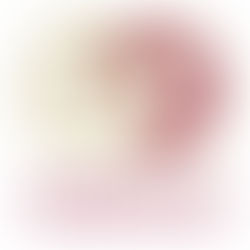Another seasonal Raku firing session
It seems that this is turning into an annual festive tradition on the MA course: a Raku firing session marking the end of the semester before the Xmas break.

This time I managed to plan ahead and decided whether I may be able to use this not just for the fun of pyrotechnics but to see whether this may something I may use within the overall context of my work. So, I made two pieces from Ashraf Hanna white Raku clay, one larger slab-build three legged pot and a smaller figure from multiple pinch pots put together. The three legged one is a variation of a Raku pot I made three years ago in a different clay (see left), just without the frill around the top edge and no glaze or oxides.
I decided that I wanted to use make a simplified version on which I would try out naked rake decorations with some pattern work loosely based on work inspired by UK based potter Dave Roberts. Unfortunately, I had forgotten about the section covering his working practices which are described in Peter Beard's book Resist and Masking Techniques (London, 1996). This would have been helpful to reread!
Anyway, I made sure that my pot was properly smoothly burnished before bisque firing.


I turned it upside down and poured the Carbon Crackle Resist Slip over it before letting it dry a bit and then repeating the process with the white Raku glaze. I missed a strip on the side and had to touch that up.


Once dried a bit more I started to carve a lined pattern through the layers by using the pointed in of a scalpel. The glaze and resist slip seemed to easily break away in chunks so I sprayed areas with some water to prevent this. This also seemed to prevent the whole process from getting to dusty. I did try to gently brush off some of the loose glaze with a soft brush but it seemed to just encourage the incised lines to be filled up. I wasn't sure that wouldn't cause problems during firing and soon stopped.

This is the finished decoration before going into Raku firing. On the left is the other figure made from the same clay. However, this was glazed completely with the white crackle clay except the the areas which I masked out with strips of masking tape:


I made sure that the green tape was positioned so that the areas on which the figure would stand had no glaze on them.
Then the process is just a ordinary Raku: it goes into the Raku kiln and after getting up to temperature once the glaze is matured the pieces get taken out and left to cool down a bit in the air to encourage crazing of the glazes or resist slips before going into a closed container with combustable material.


After about 30 minutes in reduction I am raking out pots from the bin with a metal clothes hanger. The resist slip is still on the pot (along with some glowing bits of wood shavings). I then splashed it with water to encourage the resist to crack off. Then comes the scrubbing under water to remove all the remaining bits of resist before letting the pot dry and then polishing it up with wax.


Even though the result is rather pleasing I had expected a different outcome. It is a lot darker and these is hardly any crackling. On the other hand I hadn't expected to have fine metallic lines. Having reread the section on Dave Roberts in Beard's book I think I know where I've gone wrong - if you can call it that. I should have left much more drying time between applying the resist slip and the glaze and only applied a thin layer of glaze with a spray gun. I probably also shouldn't have wetted the layers before incising into them. Maybe there was no need to go so deeply until I got to the clay. That said, I think there is real potential for me to roll this out and try it out on one of my larger figures.

This is the outcome of the two other pieces. The use of masking tape is more successful than I had anticipated. The black areas are crisp and have near metallic black sheen. I prefer the figure above to the one below with the turquoise. I am not keen on the turquoise colour and neither do I really like the metallic copper colour of which there fortunately isn't much.
However, the black and white of the figure above seems much more considered and the geometric pattern of the resist lines contrast nicely with the random crackle effect. I just wished I could have left it in out in the open air after getting it out of the kiln to increase the crackle effect. Is there a way that I could combine the masking technique with the naked raku glazing techniques to get different quality of patterns on one piece? Need to think about it...

















